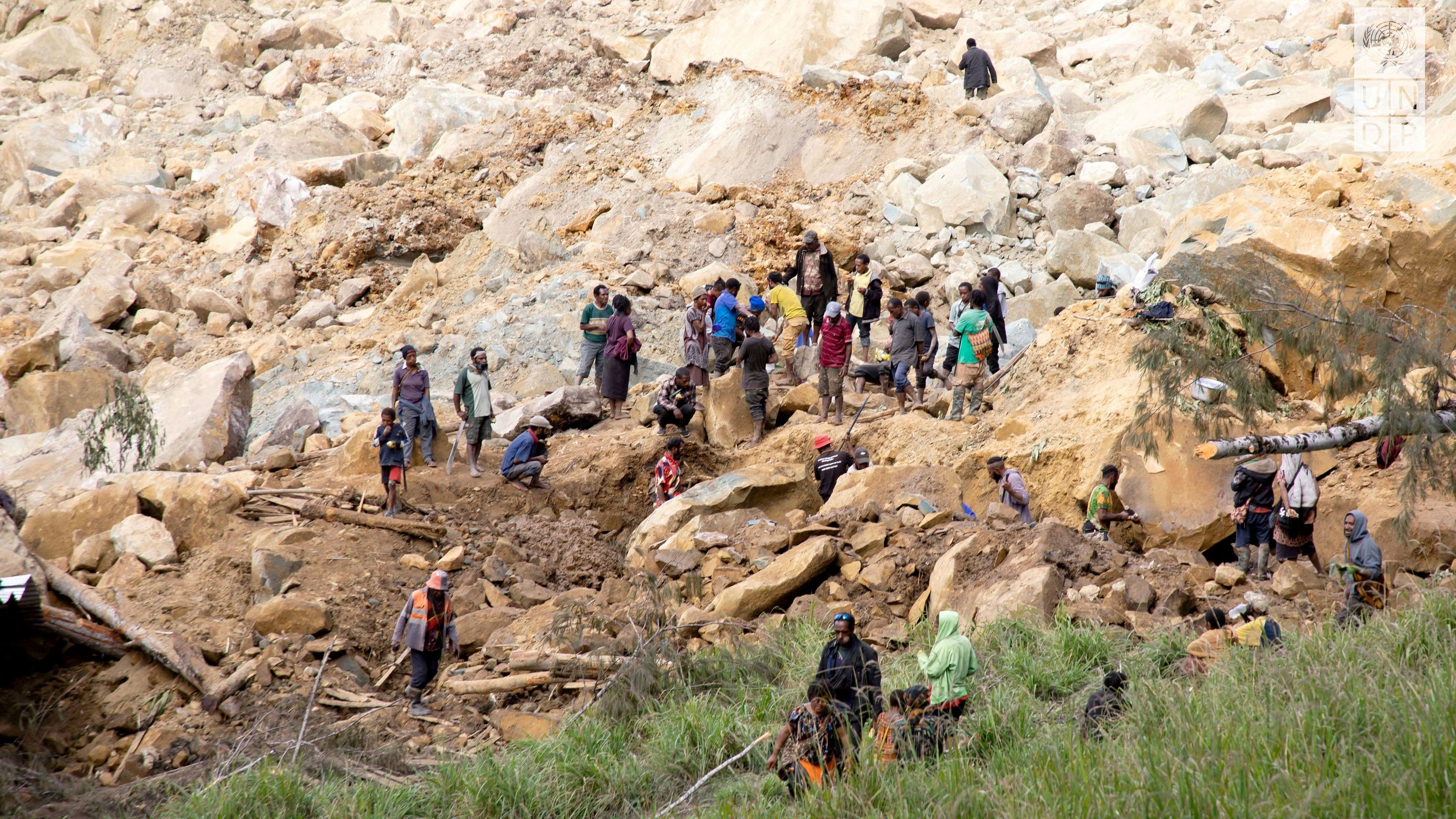
People clear an area at the site of a landslide in Yambali village, Enga Province, Papua New Guinea, May 27, 2024.
Credit: Reuters File Photo
Wellington: Further landslides will likely plague the area where part of a mountain collapsed onto a remote village in Papua New Guinea two weeks ago, New Zealand geological experts warned on Friday, as authorities ended search and rescue efforts.
It remains unclear how many people died in the massive landslide in PNG’s Enga region on May 24, with the national government reporting more than 2,000 people have been buried alive and a UN estimate putting the death toll at around 670.
Only 11 bodies have been recovered so far.
New Zealand geotechnical engineers sent to Papua New Guinea released a report on Thursday raising concerns about the stability of the ground not just in the landslide but also to either side of it.
"We believe that there is real potential for further landslides to occur in the near or medium term,” Aaron Waterreus, the leader of the Fire and Emergency New Zealand (FENZ) team which include the geotechnical engineers, said in a press conference on Friday.
FENZ geotechnical engineer Jan Kupec added the landslide, which covers roughly 14 hectares (35 acres), is of such a scale it is impossible to stop it from moving and it could continue to move for months or even years.
He said the rock avalanche was likely part of an old landslide that has been reactivated and there were now concerns the start of monsoon rains will liquefy the material that had fallen off the hill and again reactive the landslide.
Enga Provincial Government on Thursday announced mass evacuations of further areas around the landslide due to concerns around further earth movement.
The government has ceased searching for bodies and the area has been deemed a mass burial site.
The UN International Organisation for Migration said more than 7,200 people were displaced by the landslide and the numbers may increase.
Treacherous terrain and tribal unrest in the area meant heavy equipment and aid have been slow to arrive, and PNG government officials a week ago ruled out finding survivors under the rubble.
The disaster site will be quarantined with access restricted to prevent the spread of disease from decaying bodies, according to the IOM.